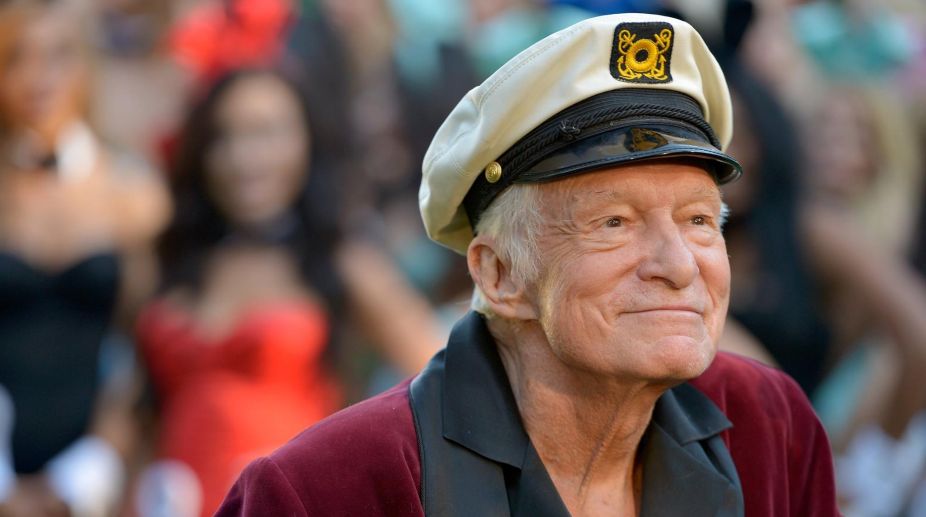Crystal Hefner reveals animal abuse at Playboy Mansion
Crystal Hefner exposes disturbing details of alleged animal abuse at the Playboy Mansion in her revealing memoir, "Only Say Good Things: Surviving Playboy and Finding Myself."

Hugh Hefner (Photo: Facebook)
Hugh Hefner, who created the Playboy magazine and spun it into a media and entertainment-industry giant, has died at his home, the Playboy Mansion near Beverly Hills, California. He was 91.
His death was announced by Playboy Enterprises via Twitter on Wednesday night.
Advertisement
Hefner turned the magazine into a multimillion-dollar entertainment empire that at its 1970s peak included TV shows, a jazz festival and a string of Playboy Clubs whose cocktail waitresses wore bunny ears and cottontails, reports CNN.
Advertisement
Hefner was born April 9, 1926, in Chicago to Glenn Hefner, an accountant, and Grace Hefner, a teacher. Both parents were conservative Protestants from Nebraska.
In 1944, after graduating from high school, Hefner joined the US Army as a writer for a military newspaper.
Following the Second World War, he became a promotional copywriter at Esquire magazine, where he began toying with the idea of publishing a men’s magazine.
After raising $10,000 from investors, the 27-year-old Hefner published the debut issue of Playboy in December 1953 and it had Hollywood actress Marilyn Monroe on its cover.
Playboy was an immediate success, selling more than 50,000 copies.
“I’ve never thought of Playboy, quite frankly, as a sex magazine,” he told CNN in an earlier interview.
“I always thought of it as a lifestyle magazine in which sex was one important ingredient.”
The magazine also featured lengthy interviews with high-profile figures like American activist Martin Luther King Jr., musician John Lennon and Jimmy Carter, who made headlines after granting Playboy an interview during his 1976 campaign for President.
As Playboy flourished in the 1960s and 1970s, Hefner steadily expanded his brand. Wearing a tux and brandishing a pipe, he hosted TV shows — Playboy’s Penthouse and Playboy After Dark — that featured him chatting up entertainers in a swinging, bachelor-party setting.
In 1960, he launched a chain of exclusive Playboy Clubs in cities across the US and overseas.
In 1971, he bought the now famous Playboy Mansion in Los Angeles, which soon became Hefner’s home and attracted celebrities to its lavish all-night parties.
Hefner was compared to Jay Gatsby, Citizen Kane and Walt Disney, but he was his own production, reports The New York Times.
He repeatedly likened his life to a romantic movie; it starred an ageless sophisticate in silk pajamas and smoking jacket, hosting a never-ending party for famous and fascinating people.
Advertisement